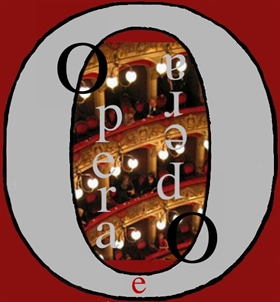Review by Natalia Dantas ©dibartolocritic —
Spring noise around the recent discovery in France, in Toulouse, a painting of large dimensions, cm. 144 x 173.5, which seems to have been discovered in 2014 and kept hidden until now, portrayed Judith slaying Holofernes.
The press has spread in various ways and complacent journalists have winked at expertise promptly made in France and posted to Youtube, where Eric Turquin, "expert" at the helm of the eponymous private studio, leaped and ruled that the work can be attributed to our immense Michelangelo Merisi da Caravaggio.
Forgotten for over 150 years in an attic, it was claimed that the picture was discovered completely by accident, when the owners of the building where it was concealed, having suffered a leak, have spoken to repair pipelines.
The work, which according to Turquin arrived at Toulouse in the mid-19th century, was found “in an exceptional State of preservation. The owners are descendants of a Napoleonic army officer. And’ Maybe because of him being added to the family property”.
In this venue, however, skepticism lingers, and you share what several other art historians, since it had doubts about the attribution, firstly for the too perfect condition of the painting and the incredible circumstances, which can be considered the "Napoleonic" fairly obvious and commonplace, indeed.
It is useful, therefore, to give a better look, as much as possible from the images available, the newfound canvas, which will be submitted to lengthy study by the experts of the Louvre to determine if it is indeed an original work of Michelangelo Merisi or one of his followers.

It seems that the French date the painting in 1604-1605, while the famous painting, depicting the same subject, preserved in the Museum of Palazzo Barberini in Rome and universally recognized as authentic, is a few years before. Hence the newly found cloth would be after the first Judith and Holofernes that we all know what immense masterpiece.

There is also a copy of the original so far unknown Caravaggio (the French one?) created by Flemish painter Louis Finson in the early seventeenth century and preserved today at the Palazzo Zevallos, in Naples. Also supported by the existence of a will, be that there is really an original painting by hand of Mahmud.

A cursory examination, only photographs that were circulated by France, the painting ended up well above the invoice seems certain pictorial copy kept in Naples.
“That particular light, that energy typical of Caravaggio, without corrections, consisting of a sure hand as well as the subject of the painting, tell us that this painting is authentic”He added Turquin, about the French Treasury. But the attribution does not convince.
The crop of old in the background seems to have been one of the keys to affix to the signing of Italian genius. In fact, the creation of wrinkles and the whole of the figure appear rather approximate for the finest hand of Caravaggio.
Even the figure of Giuditta, maiden in flower in the original preserved in Rome, has taken from matron, dark, almost mournful, which does not befit the freshness of Caravaggio's drapery, nor have a correspondence with those of the maiden.
Graphically, moreover, both female figures are not overall nor well implemented nor pull over.
Always putting the immense technical periza-composition of Caravaggio, even the face of Holofernes, the rendition of twist of his body, the lights that torniscono limbs appear less expertly arranged and depth leaves something to be desired.
As for the writer's opinion, then, ultimately, data unfortunately few means of examination permitted, Caravaggio is absent, and it is especially in the General composition before imprinting.
The polished radiance of the naturalness of the collection of the Judith original gives way to a series of figures that appear as “cut out” And then “stuck” next to each other, without any naturalness, minus, as before hinted, even the depth and harmony of composition of the painting, which, albeit theatrically a little’ too tragic, should contain “the spirit” Caravaggio, made of lights, shadows and flashes of genius. Here a kind of toughness, however, pervades the whole.
Very fine, however, the work…But not up to the “After” the other Judith, as they dated. High school, but school.
According to the art historian Mathilde Tastavy in the South of France have been numerous painters were inspired by the Italian master and its analysis about alleged followers in the land of France, that award a painting found, appears relevant.
We expect, of course, the authoritative expert studies of the Louvre.
Natalia Dantas – ©dibartolocritic
PHOTOS FROM THE WEB

